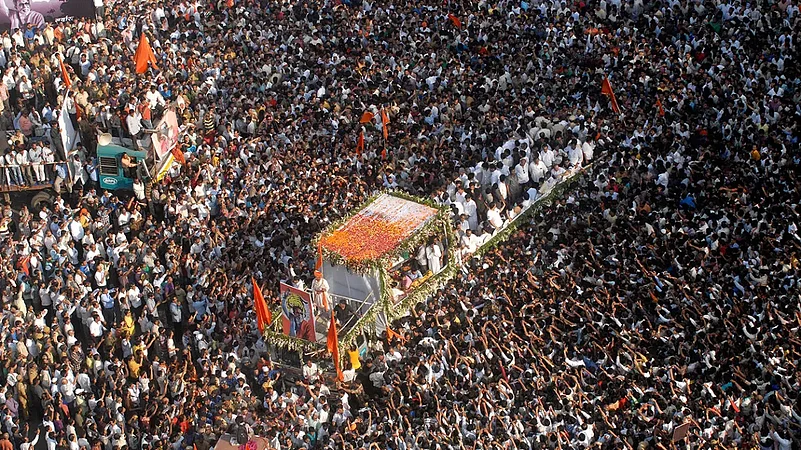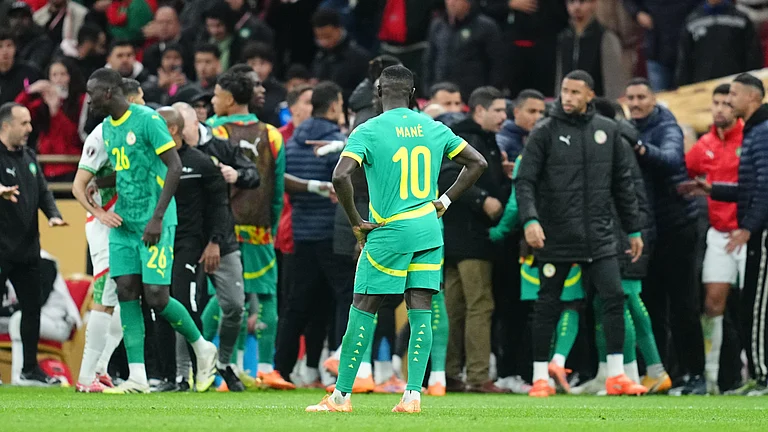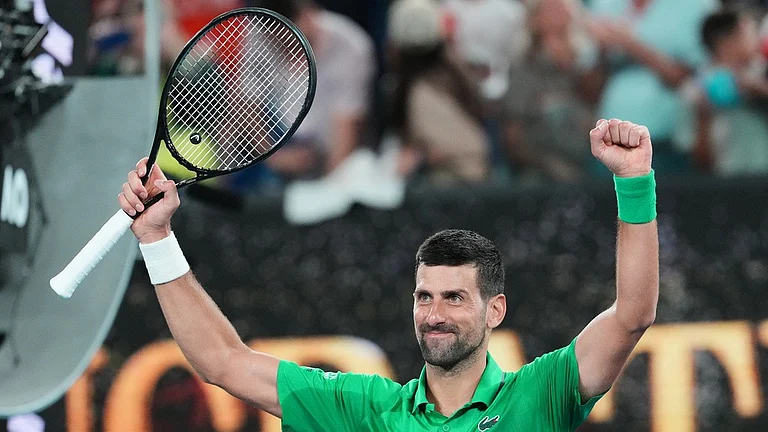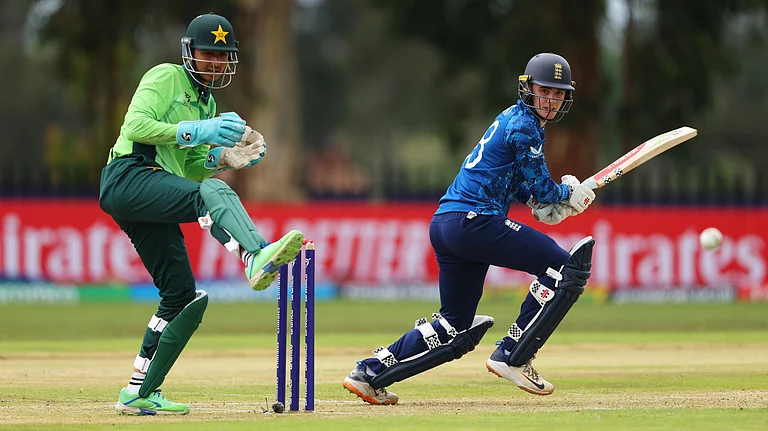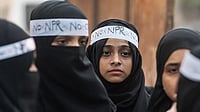On June 15, when Aaditya Thackeray visited Ayodhya with senior Shiv Sena leaders, he was sending a message to the BJP that his party had not abandoned the Hindutva plank. The visit was significant in more ways than one. Not only was it an attempt to convince its vote bank that Shiv Sena remains the sole custodian of the legacy of Aaditya’s grandfather, founder Balasaheb Thackeray, but also to tell Aaditya’s uncle Raj Thackeray, the chief of the Maharashtra Navnirman Sena (MNS) that the Shiv Sena could match his attempts to appropriate the party’s legacy.
Though Raj too was scheduled to visit Ayodhya on June 10, the BJP’s opposition to it made him cancel it. Brij Bhushan Sharan Singh, a BJP MP from Kaiserganj in Uttar Pradesh, had not only opposed the visit, but had also demanded a public apology from the MNS chief for humiliating North Indians in Maharashtra. Raj had also wanted to meet Uttar Pradesh Chief Minister Yogi Adityanath, a request staunchly turned down by the state BJP unit. Given the politics of one-upmanship between the Shiv Sena and the MNS, it is an advantage of sorts for the former, said sources.
Maharashtra CM Uddhav, the incumbent Shiv Sena chief, and Raj are cousins. Their fathers, Balasaheb and Srikant Thackeray, were married to two sisters, making it a tightly knit alliance. The cousins grew up together and were close to each other. Uddhav, the elder of the two, was inclined towards environmental and photographic pursuits, while his younger sibling traveled with Balasaheb, interacting with Shiv Sainiks and learning to navigate the by-lanes of politics. Like his uncle Raj’s persona took on an aggressive edge, while Uddhav remained a soft-spoken man aloof from politics. As they grew up, both developed ambitions to sit on the chief minister’s gaddi. While Raj was open about it, Uddhav’s kept his ambition close to his chest. “He was never a reluctant politician. The only reason Uddhav never talked about it was because no one had asked him about it,” says a Shiv Sena leader.
The genesis of their feud can be traced to the post-1995 era, when the party got its first chief minister in Maharashtra. Though Uddhav continued to remain a backseat diplomat, those who visited Matoshree—the Thackeray residence in Bandra—also interacted with him. Thus began Uddhav’s initiation into politics and Raj’s isolation from Shiv Sena’s daily functioning. Alongside Balasaheb, two more power centres—Uddhav and Raj—emerged. It reached a point when Raj was either not invited, or stopped attending important party meetings. Egged on by their friends in the media, the chasm widened and the battle for supremacy between the cousins was laid bare.

On January 30, 2003, Uddhav was chosen as the working president of the Shiv Sena. Although it was Raj who had proposed his cousin’s name, all was not well between them. Both had nurtured the ambition to head the saffron party. The decision was a huge setback for Raj—who had in the past headed Bharatiya Vidyarthi Sena, the party’s student wing. He was more popular, not only among partymen, but also with media and influencers. The cousins parted ways in 2006, becoming bitter rivals from friendly co-workers.
Through the years, the bitterness has remained. In the renewed Thackeray versus Thackeray feud, Raj is looking to draw Shiv Sainiks who are disillusioned with their party’s alliance with ideological opponents Congress and NCP. Shiv Sena is a part of a tripartite coalition in the Maha Vikas Aghadi government in Maharashtra. Raj seeks to claim his uncle’s Hindutva legacy and has taken a more aggressive posture than in the past. Just weeks ago, he forced his cousin to a corner by issuing an ultimatum and a deadline to bring down loudspeakers from all mosques in Maharashtra. Even as Uddhav was huddled with his cabinet, seeking a middle path through the tricky issue, MNS put up banners at prominent places, including in front of Shiv Sena’s headquarters in Dadar, pitching Raj as the only stakeholder of Balasaheb’s Hindutva legacy. In retaliation, Shiv Sena put up hoardings saying, “Hindu Hruday Samrat Balasaheb Thackeray, ya sam dusre hone nahi (There can’t be another Balasaheb Thackeray, the king of Hindu hearts).
Raj bears a close resemblance to his uncle in looks, oratory and aggression. Of late, he has also started draping a saffron shawl around his shoulders like his uncle. Though the cousins have visited each other during family emergencies like the death of Balasaheb, Uddhav’s angioplasty, or when Raj’s daughter Uravashi was admitted to the hospital with a fractured foot in 2014, the bitterness has grown manifold since Uddhav took over as the CM in 2019.
Raj is perceived by many as a political failure, a man who spews anger and rages at everyone without achieving much. Though Raj has Bal Thackeray’s baritone and oratory skills, the similarity ends there, say others. “Their feud will not affect Maharashtra, only their own parties,” says a former Congress CM to Outlook. “Both of them have to stay relevant. As chief minister, Uddhavji’s performance is closely watched by everyone. He has to take along everyone, but Raj has no such compulsions, so he is fomenting hatred,” he adds.
In recent months, Raj has found a scathing critic in Sharad Pawar, the NCP chief and mentor of the MVA government. In an interaction with the media in Kolhapur this April, Pawar called Raj “a vanishing political entity who appears once in 3-4 months”.
Writer Dhaval Kulkarni, in his book The Cousins Thackeray: Uddhav, Raj and the Shadow of Their Senas, has looked closely at the relationship between Uddhav and Raj, and the unease that crept into it in the later years. Kulkarni mentions that while Raj was being pitched as Balasaheb’s successor, Uddhav was working on himself. “Those familiar with Uddhav noted that despite his understated style, he was a learner.” According to the book, a friend of Raj narrated an interesting anecdote. In 1997, Raj and his friend started playing badminton at Dadar Club. Uddhav too joined them. One day, during a game, Uddhav fell down. Raj and his friend laughed at him. From the next day, Uddhav stopped coming, but enrolled for badminton lessons at Bandra’s MIG Club, and soon mastered the game.

A Shiv Sainik referred to Uddhav as a “work in progress”. “When he became CM, he was called a greenhorn. But look at the way he has shaped up. He is a learner and never shies away from enquiring about what he doesn’t know. Raj too is curious, but lazy. He loves a good life,” he adds.
When Raj founded MNS in 2006, it was his charisma that was the lure for Shiv Sainiks to cross over, said sources. However, in the past decade, it began to wane as he was unable to walk the talk. Like the Sena’s traditional Dussehra rally started by Balasaheb, Raj started MNS’s Gudi Padwa rally. However, when MNS activists realised that their chief was low on political deliverables, disillusionment set in, and they began to return to the Sena.
The fact that even the Marathi manoos plank could not win him votes shocked Raj, who had banked on the issue to get an edge over Shiv Sena. Both Uddhav and Raj lack the political acumen and people-connect that Balasaheb had. Though he was Mumbai-based, he had moved out of the city limits and understood the finer points of rural politics, where caste plays a big role. The permutations and combinations of caste are lost on the cousins, who are cosmopolitan, and intimidated by rural mobilisations along political and caste lines, say sources.
Their personalities differ probably due to their differing entry points in politics. While Raj was a part of Sena’s student wing, Uddhav stepped into politics via the party mouthpiece Saamana. While Raj comes across as a street fighter, Uddhav is a diplomat.
Despite their aggressive posturing for the Marathi language, their children studied in English medium schools run by Jesuits. Both suffer from an inherent distrust of influential leaders with mass base within their parties. Interestingly, Uddhav is popular with women voters. Both suffer from another personality fault—they never forget a slight. A former Shiv Sena MP described Uddhav as a good listener and a “quiet manipulator”. Raj has a short attention span, considered one of his biggest failings.
They have their similarities too—both are inaccessible and block access to people who fall out of favour with them. Over the years, Raj has emerged more confused than before. Today, he is a caricature of what he was when he had launched MNS. For a man who rode a gigantic wave, his fall has been as sharp. Today, he is a pariah—a party sans friends or coalitions.
Interestingly, in 2016 as his political decline continued, he decided to change the direction of his party symbol—steam engine. At the time of MNS’s birth, the steam engine faced left to right. It was given a new direction—right to left—after the 2014 Lok Sabha polls, in which his party lost all 11 seats it had contested. In 2017, Raj wrote to the Election Commission, seeking another directional change for the steam engine—back facing left to right. Despite this, he could not stem MNS’s decline. Battlelines are already drawn as the cash-rich BMC is slated for polls later this year. It will be tough for both, as they will once again battle over Balasaheb’s legacy.
(This appeared in the print edition as "War of the Poses")
Haima Deshpande in Mumbai






